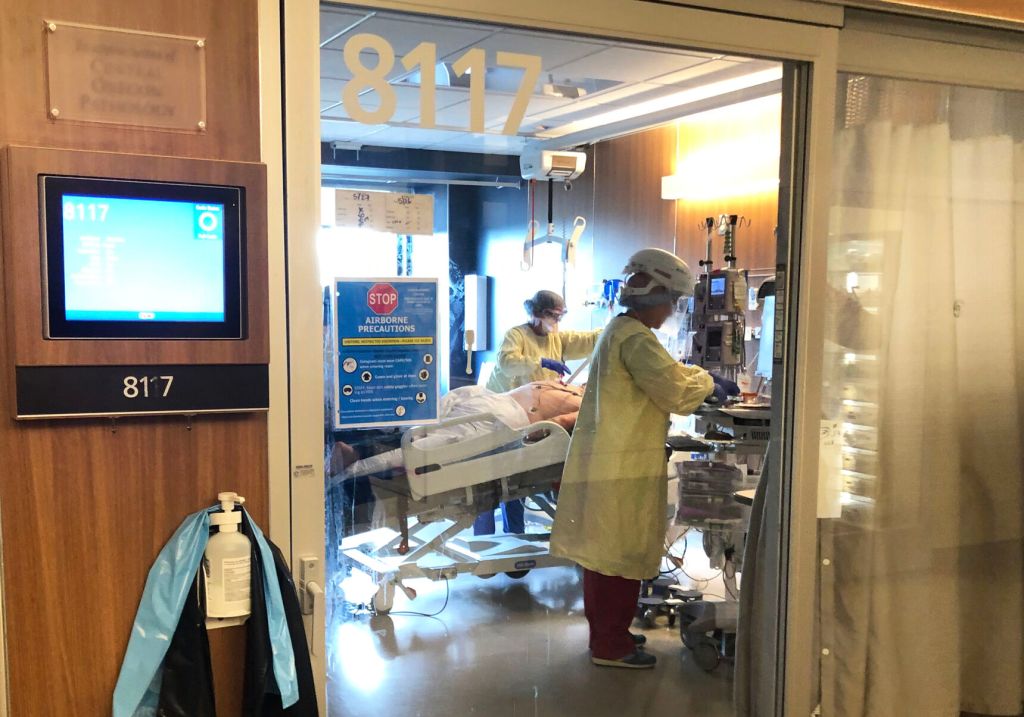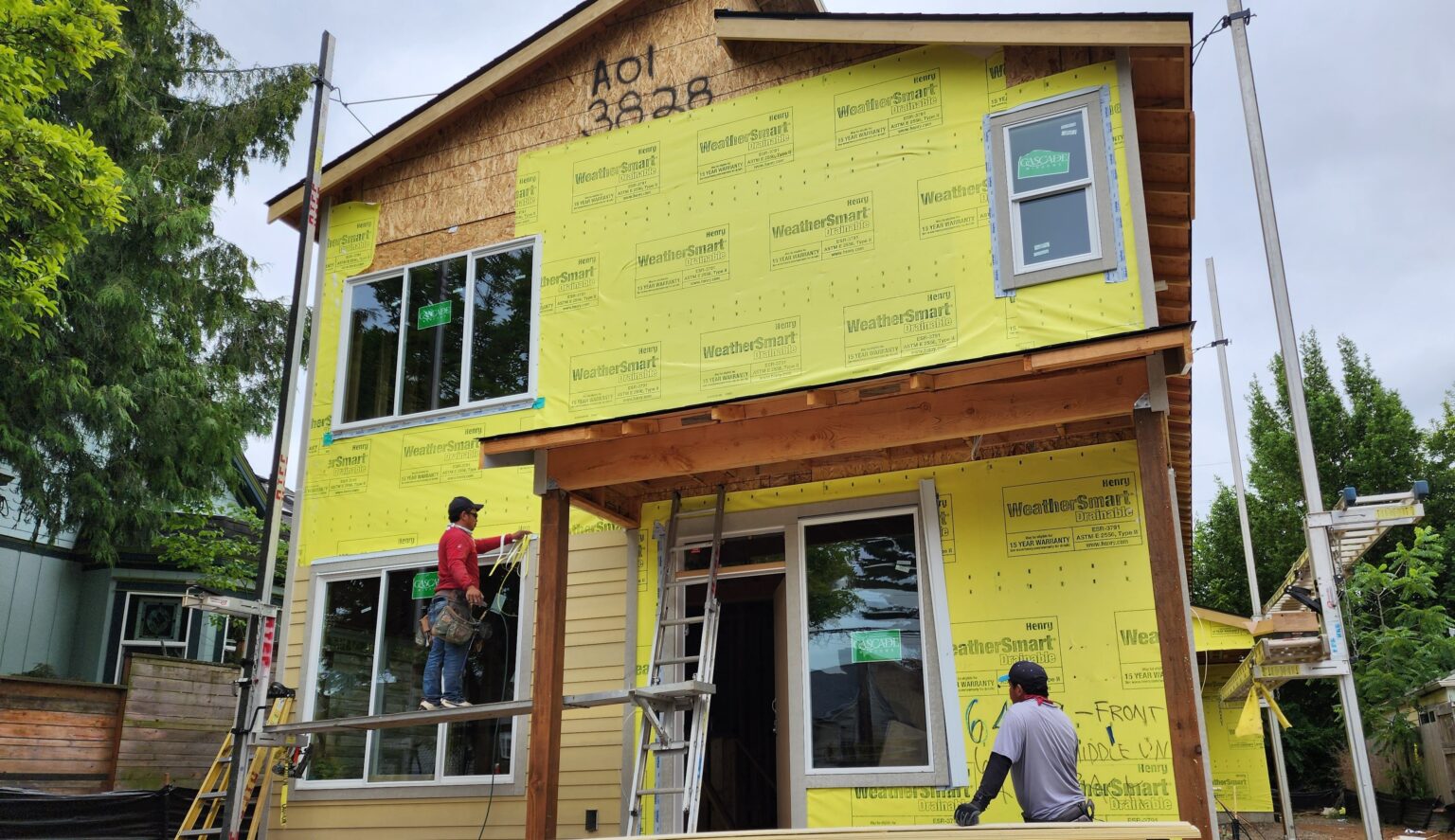Oregon could ration medical care as largest wave of pandemic hits the state
Published 11:12 am Friday, January 7, 2022

- Nurses in the St. Charles Bend intensive care unit treat a COVID-19 patient May 27, 2021.
Oregon is on a “red alert” of the growing wave of the omicron variant of COVID-19 that pushed the daily new case count to 10,451 Friday, eclipsing the records set over the past four days.
“Once again, COVID-19 has regrouped and is marching across Oregon,” said Dr. Dean Sidelinger, the state chief epidemiologist, in a Friday press call.
The Oregon Health Authority reported 625 patients with COVID-19 in hospitals, up from 37 from the prior day’s report and 185 from Dec. 30, the last single-day report before the New Year’s holiday weekend.
The count including those admitted for possible COVID-19 and patients who tested positive while in the hospital for other reasons.
The current omicron waves is forecast to peak on Jan. 27 with 1,650 people in the hospital, according the the lastest forecast released Thursday by the Oregon Health & Science University.
If the forecast is correct, the top mark will be 30% higher than the peak of the delta variant wave that crested at the beginning of September.
Seeing the omicron cases that are sweeping across states to the east, the Oregon Health Authority on Friday issued a “crisis care” protocol to guide doctors faced with prioritizing possibly life-or-death care.
Based on a model already used by Washington and other states, patients who would not survive if discharged have top priority. Patients already under care take precedence over newly arriving cases of the same level.
If a choice needs to be made between two patients in similar medical situations, the decision will be made at random using a “triage algorithm” provided by OHA.
“This is a very difficult topic to consider and work on,” said Dana Hargunani, Oregon Health Authority chief medical officer.
Omicron spreads twice as fast as the delta variant that swamped Oregon hospitals, peaking in September.
Early studies show omicron more easily infects fully vaccinated people compared to earlier versions of COVID-19. But people who have received the two-shot Pfizer or Moderna vaccine and also had the recently added booster shot are unlikely to suffer the worst outcomes.
In so-called “breakthrough” cases, people who have had the maximum number of shots make up about 4% of those needing hospital care and 1% of deaths. The average age of death for that group is 81.
Sidelinger said omicron was a “red alert” for unvaccinated people, who make up the vast majority of severe cases requiring hospitalization, intensive care unit beds, ventilators and whose infections prove fatal.
But the severity of omicron will be largely offset by the sheer number of people who will be infected.
“That doesn’t help with the kind of all-at-once impact on hospital capacity that we’re going to see here, and hopefully prevent,” said Peter Graven, the chief medical forecaster for Oregon Health & Science University.
The unvaccinated who fall severely ill will require high levels of care that will make it more difficult for already overstretched and exhausted medical personnel to care for people with heart attacks, strokes, and injuries from vehicle accidents.
Gov. Kate Brown also ordered the Oregon National Guard to deploy what Sidelinger called 500 “non-clinically trained” members to help relieve hospital staff around the state whose staff are depleted by infections among their own ranks.
Which hospitals will receive aid from the National Guard is under consideration and won’t likely be announced until Monday, according to Brown Press Secretary Liz Merah.
Under recent state guidelines following recommendations by the Centers for Disease Control and Prevention, anyone vaccinated who tests positive for COVID-19 should isolate for five days, then wear a mask in all places for another five days.
The Oregon officials said they were monitoring states to the east, where the omicron spike arrived earlier. The ability of omicron to infect vaccinated people has led to staff shortages in medical emergency responders, schools, law enforcement, public transit, private businesses and government agencies.
Friday’s report included Friday’s report included 33 deaths. The largest number – six – were Deschutes County residents.
Multnomah County, which includes Portland, reported 2,380 new cases – the most in the state. Neighboring Washington County reported 1,891 new cases. Marion County, which includes the state capital at Salem, had 1,266 new cases. Clackamas had 1,132 new cases.
Deschutes County also continued to have the highest population-adjusted number of infections of all 36 counties. It averaged 1,391 cases per 100,000 people per day over the previous week.
Benton County, which includes Corvallis and the main campus of Oregon State University, was second with 1,170 cases per capita. Jefferson County was third at 1,108 per capita. Washington County was the only other to hit four digits, at 1,008.
OHA reported Friday that 21.5% of COVID-19 tests statewide. In Morrow County, more than half of all tests – 53% – were positive. The county has a population of 12,186 according to the 2020 U.S. Census.
Marion County was second highest at 27.4%. It has a population of 345,920.
Keeping Oregon schools open with in-classroom teaching is the “North Star” guiding state policy, said Colt Gill, director of the Oregon Department of Education.
But the virus is having an impact on schools that is likely to rise in coming weeks.
“I’m not saying students and staff won’t be exposed,” Gill said
Sidelinger said that he understood people are fatigued by what are now six waves of the virus since the pandemic reached Oregon in February 2020. But dropping masking, social distancing or not getting as many vaccinations are recommended will only extend the time before new infections get low enough for a return to some pre-COVID-19 conditions.
“We’re all tired of the virus, but the virus is not tired of us,” he said.





